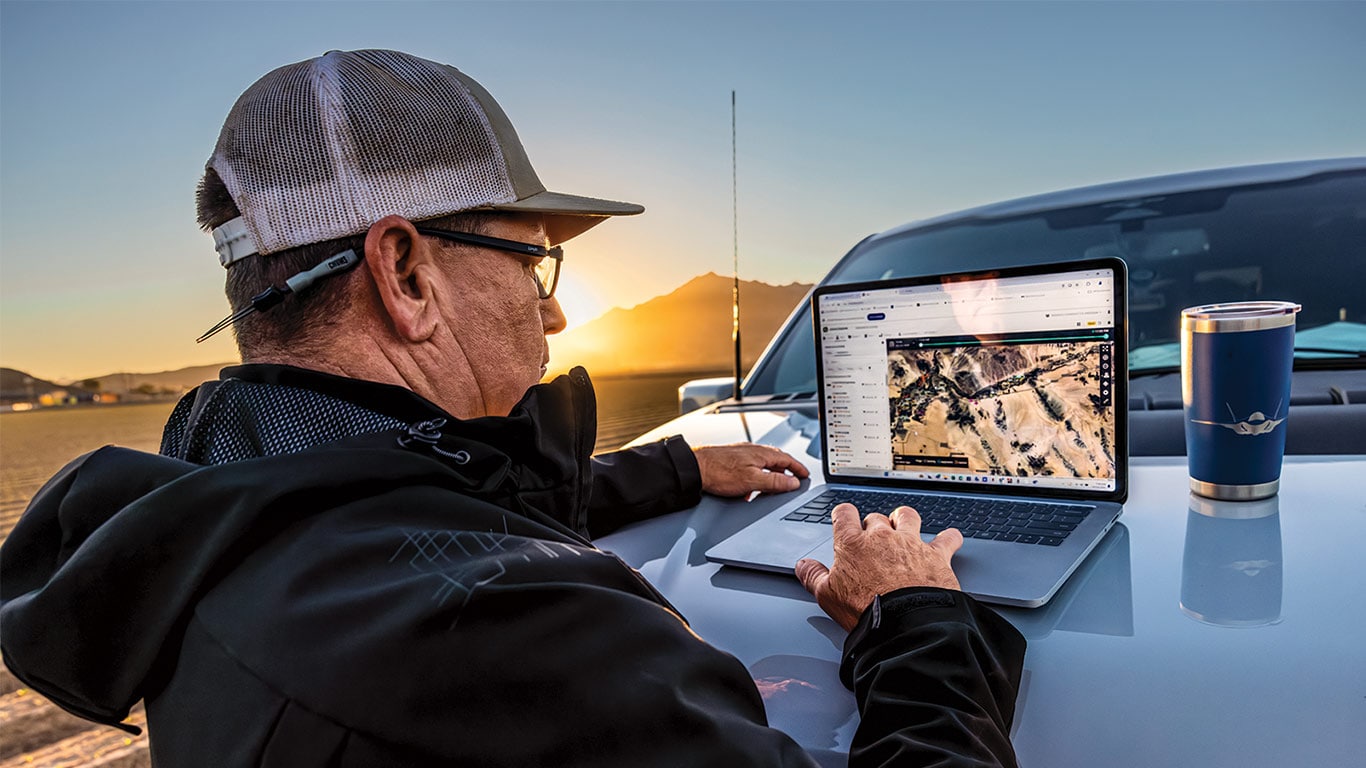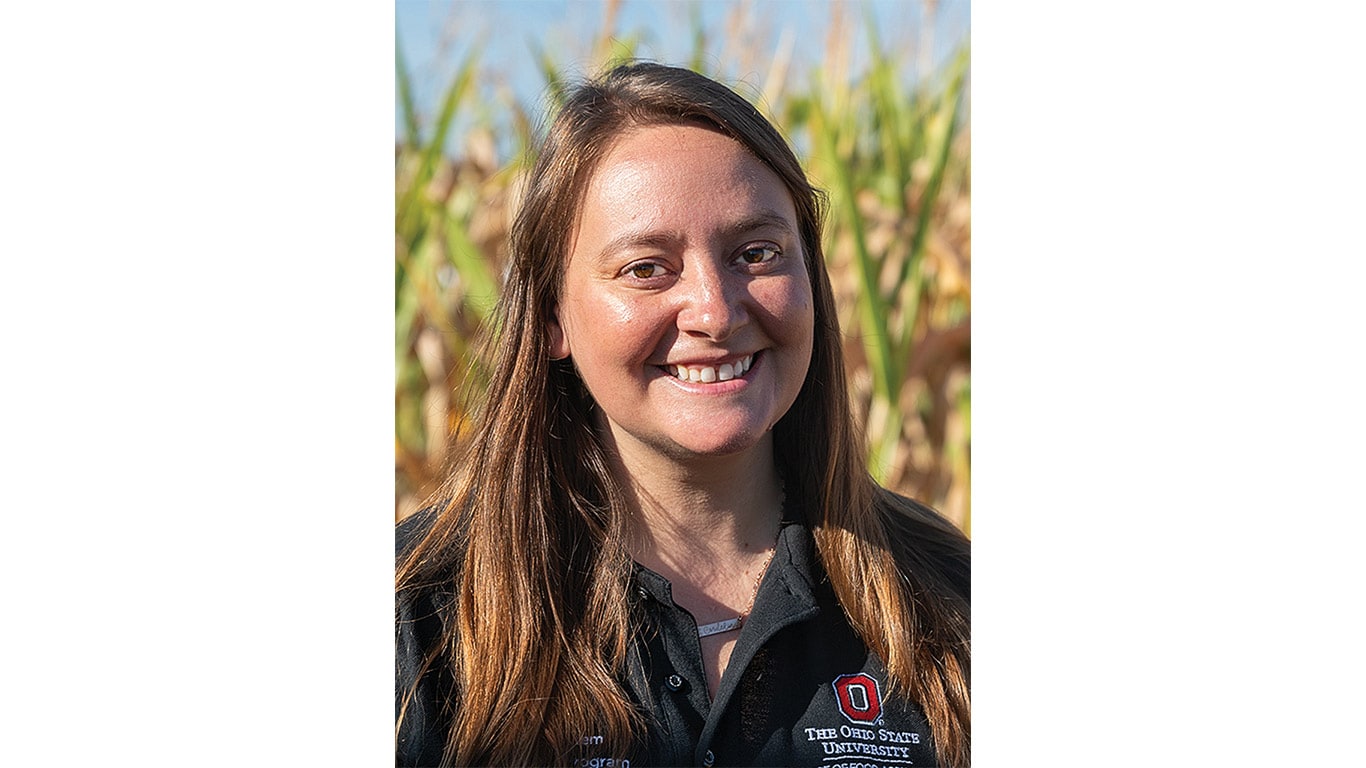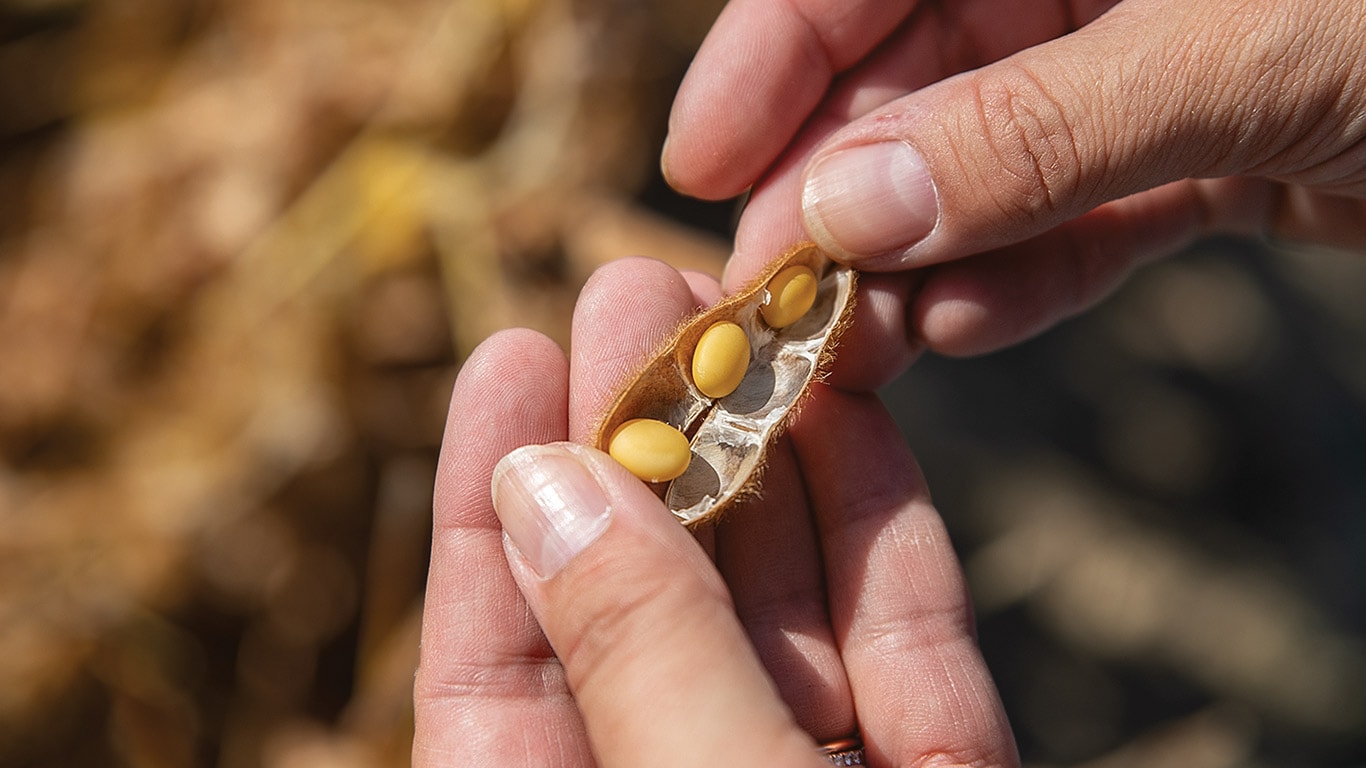Agriculture, Education September 01, 2025
Fields of Evidence
Ohio farmers are turning their operations into living laboratories.
by Katie Knapp
"The side-by-side trial used to be the easiest to execute as far as on-farm research went. It required the least amount of effort for the information gained. But today, I would not consider it a valid trial," declares sixth-generation row crop farmer Ryan Lee.
He makes this bold statement after participating in Ohio State University's eFields research program for several seasons.
OSU Extension launched this on-farm, field-scale research program in 2017 to better understand how university production research findings play out in real-world conditions.
"We know our university researchers do a great job of doing plot research to answer big questions, but a lot of times it gets lost in translation when you try to take it to the farm," Elizabeth Hawkins explains. She is an OSU Extension agronomic systems field specialist and leads the eFields program. "The program brings together our researchers, our industry professionals, and then our farmers, to really learn together and drive innovation at the farm level."
What started with 45 trials on farms across 13 counties in 2017, has expanded to hundreds of studies on thousands of acres this year, about everything from seasonal weather impacts to fertilizer application rates and timing.
Above. Elizabeth Hawkins, OSU Extension field specialist, has helped lead the eFields program since it launched in 2017. She thinks the soybean seeding rate research is one of the biggest successes of the program so far.
Real answers. Hawkins attributes the program's strength to its ground-up design. "The farmers are often now the ones bringing us the ideas. County and state Extension staff are on the ground making sure details are not missed, and our researchers are then analyzing and trying to figure out the next question."
She adds, "I'm still surprised at how quickly we can answer questions because of how many replications we can do through this program each year."
Conducting the trials easily is also crucial, especially when testing practices that could make or break a season.
Lee says his family readily participates in trials now because the process is so simple. "Ohio State provides the protocol, does the randomized, replicated plot layout for you, and then they crunch all the data on the backside. It is just so easy to execute."
As a result, he says they have moved from confirming the best practices to testing new options.
"Part of the problem in implementing a new practice is the risk involved. As commodity producers we must be a low-cost producer to survive, and you can't afford to be trying new things that end up costing you money with no return," Lee says. "Because the eFields program has removed most of those barriers, the floodgates have opened on what we can explore on our farm."
According to a recent survey of Ohio farmers, the program's quick growth is because farmers are truly finding the data valuable and applicable. The responding farmers overwhelmingly said eFields information has positively impacted their production methods and technology use.
What makes this data set so influential is how real it is, says Lee. "You have confidence in the final data. You know it's not just from 'show plots'—it's from real fields."
Expanding the model. This approach has been so successful it's expanding. Livestock and specialty crop producers and researchers are now taking the same approach. eBarns launched for livestock in 2022, and ePLUS (short for Produce, Landscape, Urban, and Specialty Crops) launched in 2024.
"The power of on-farm research is taking the recommendations from classical research and figuring out how to make it work on your farm," Hawkins says. "I think the program's value is proven when I hear farmers asking each other, 'Hey, did you see this? Can you believe these results? Maybe we should try that.'"
Hawkins says farmers across North America can find value in their research results, and she welcomes questions.
Anyone can freely review the data on OSU's Knowledge Exchange hub: kx.osu.edu
"We are already working closely with some of our neighbors to learn more quickly from the data we're collecting, and I hope more states start to replicate it." ‡
Read More

AGRICULTURE, EDUCATION
Tech@Work
Equipment self-service evolution for John Deere customers.




